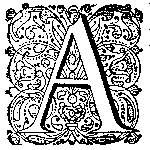Staging Conscience
Johannes Nomsz's Morality Play Iemant en Niemant (1768) and the Enlightened Zinnespel in the Eighteenth Century
DOI:
https://doi.org/10.51750/emlc13831Keywords:
zinnespel, morality play, Johannes Nomsz, Nobody, empathy, moral sentimalismAbstract
Through an in-depth analysis of Johannes Nomsz’s play Iemant en Niemant (1768), this article explores how the seemingly anachronistic genre of zinnespel (morality play) could serve to negotiate key issues of eighteenth-century aesthetical discourse. The combination of abstract ideas and sensual images ingrained into this genre made it an ideal vehicle with which to approach one of the primary problems of the period, namely the mediation between reason and the senses. Nomsz’s play deals with this rationalist/empiricist divide concerning the moral philosophical question of whether reason or feelings guide human ethical behaviour. Through empathy with the allegorical character of Nobody, Nomsz draws his audience into the teeth of a moral dilemma through emotion rather than teaching them a moral lesson. At the same time, he connects moral sentiments to a rational procedure of moral self-judgement by staging conscience as an inner court. I call this way of applying the late medieval genre of morality play to the key questions of eighteenth-century aesthetics and philosophy ‘Enlightened zinnespel’. Turning to the zinnespel with its special capacity to merge mind and senses indicates that at this time, the role of art changed. Art was no longer seen as a medium of knowledge transference, but as a medium that could generate knowledge in a unique way because of its ability to combine cognitive, affective, and sensual dimensions.
Downloads

Published
Issue
Section
License
Copyright (c) 2024 Beatrix van Dam

This work is licensed under a Creative Commons Attribution-NonCommercial 4.0 International License.





